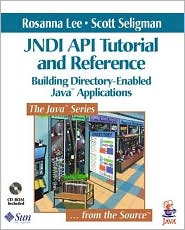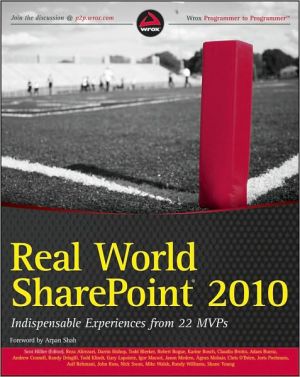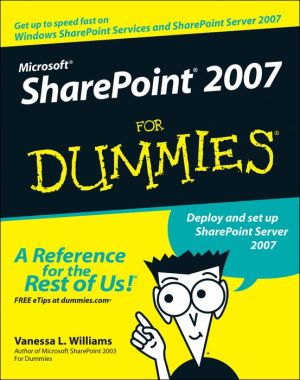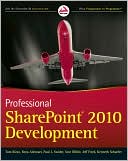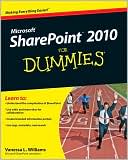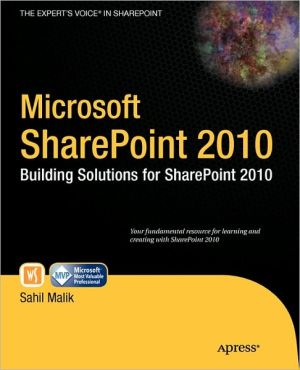JNDI API Tutorial and Reference: Building Directory-Enabled Java Applications
This book provides an introduction to naming and directory technologies and an overview of the Java Naming and Directory Interface™ (JNDI). The tutorial in this book progresses from the most basic to advanced JNDI capabilities and techniques, including more than 200 working examples that demonstrate writing, compiling, and running directory-enabled Java™ programs. In addition, this book contains a comprehensive reference section that documents all JNDI classes and interfaces.\ JNDI enables...
Search in google:
This book provides an introduction to naming and directory technologies and an overview of the Java Naming and Directory Interface™ (JNDI). The tutorial in this book progresses from the most basic to advanced JNDI capabilities and techniques, including more than 200 working examples that demonstrate writing, compiling, and running directory-enabled Java™ programs. In addition, this book contains a comprehensive reference section that documents all JNDI classes and interfaces. The accompanying CD-ROM includes JNDI software and service providers, the Java 2 platform, and the hypertext version of the Java Tutorials, the JDBC™ tutorials, and the JNDI tutorial.JNDI enables programs written in the Java programming language to access naming and directory services--a vital element of the complex distributed computing environment for today's enterprise systems. A platform-independent interface, JNDI allows Java applications to work with standard and proprietary services from a variety of vendors--including the Lightweight Directory Access Protocol (LDAP), Novell Directory Service (NDS), Microsoft Active Directory, and the Solaris™ Operating Environment Network Information Service (NIS)--so that enterprises need not lock into a single-vendor solution.Specific topics covered include:Accessing the LDAP via JNDIUsing the directory as an object repositoryConfiguring a JNDI clientHandling event notifications from the directoryCreating a federation of naming systemsBuilding a JNDI service providerAll developers using the Java programming language to write applications or subsystems that access naming and directory services will find this book an indispensable resource. Booknews A book/CD-ROM tutorial and reference providing an introduction to naming and directory technologies and an overview of the Java Naming and Directory Interface (JNDI). The tutorial progresses from basic to advanced JNDI capabilities and techniques, and includes some 200 working examples that demonstrate writing, compiling, and running directory-enabled Java programs. A reference section documents all JNDI classes and interfaces. The accompanying CD-ROM includes JNDI software and service providers, the Java 2 platform, and a hypertext version of the Java Tutorials, the JDBC tutorials, and the JNDI tutorial. Lee is Senior Staff Engineer at Sun Microsystems, Inc. Seligman is Staff Engineer with the Java Software Development group at Sun Microsystems, Inc. Annotation c. Book News, Inc., Portland, OR (booknews.com)
PREFACE: \ How to Use This Book\ This book teaches you how to write directory-enabled Java™ applications by using the Java Naming and Directory Interface™ (JNDI). It is divided into two parts: a tutorial and a reference.\ It is intended as a tutorial and reference only for the JNDI and not for the rest of the Java Platform. For a tutorial-style presentation of the class libraries in the rest of the Java Platform, see The Jav™ Tutorial and The JFC Swing Tutorial, by Mary Campione and Kathy Walrath, and The Java™ Tutorial Continued, by Mary Campione, Kathy Walrath, Allison Huml, and the Tutorial team. For a reference-style presentation of the class libraries in other parts of the Java Platform, see The Java™ Class Libraries books by Patrick Chan, Rosanna Lee, and Douglas Kramer. This book also does not explain any part of the Java programming language. Several books are available for learning the language. These include The Java™ Programming Language, by Ken Arnold and James Gosling, and The Java™ Language Specification, by James Gosling, Bill Joy, and Guy Steele.\ Following is an overview of this book.\ Tutorial\ The first part of this book is a tutorial. It is modeled after The Java Tutorial, by Mary Campione and Kathy Walrath.\ Trails and Lessons\ The tutorial consists of six trails-programming lessons grouped together by topic. To learn about a certain topic, go to the Table of Contents, decide which trail meets your needs, and go through the lessons in that trail. For example, if you are interested in writing a serviceprovider, select the Building a Service Provider trail.\ You can read the tutorial sequentially or select trails in any order. However, some of the beginner trails are prerequisites for the more advanced trails.\ The first page of a trail contains a high-level overview of the trail. It lists, describes, and provides references to all of the lessons on the trail. It also provides a detailed table of contents of the lessons in the trail.\ Each lesson begins with an introduction to the material in the lesson. Most lessons contain many examples. Trying the examples as you go along will help you to understand the concepts discussed in each lesson.\ Links\ The online version of this tutorial is filled with hyperlinks to sections inside and outside of the tutorial. In this hardcopy version of the tutorial, these hyperlinks have been handled as follows.\ \ A link to a section, lesson, or trail within the tutorial is replaced by a cross reference, annotated by a page number.\ A link to a method, class, interface, or package in the JNDI has been removed. Use instead the reference part of this book to look up the item.\ A link to an Internet RFC or Internet-draft has been removed. These documents may be accessed both from the CD that accompanies this book and the Web site at ...\
List of FiguresList of TablesPrefaceGetting Started3Naming and Directory Concepts7JNDI Overview7Examples25Common Problems (and Their Solutions)31The Basics37Preparations41Naming Operations53Directory Operations59Beyond the Basics75What's in a Name?79Environment Properties95Event Notification111URLs123Federation131Miscellaneous139Java Objects in the Directory151Storing Objects in the Directory155State Factories171Reading Objects from the Directory179Object Factories185Representation in the Directory195Tips for LDAP Users201Comparison of the LDAP and JNDI Models207Security221Miscellaneous237Searches249Referrals259Schema271Controls and Extensions289Frequently Asked Questions305Building a Service Provider311The Big Picture315The Ground Rules321The Essential Components331Adding Directory Support345Adding URL Support357Adding Federation Support371Miscellaneous387Package OverviewsAlphabetical Reference of ClassesAppendix: LDAP Schemas757Index761
\ BooknewsA book/CD-ROM tutorial and reference providing an introduction to naming and directory technologies and an overview of the Java Naming and Directory Interface (JNDI). The tutorial progresses from basic to advanced JNDI capabilities and techniques, and includes some 200 working examples that demonstrate writing, compiling, and running directory-enabled Java programs. A reference section documents all JNDI classes and interfaces. The accompanying CD-ROM includes JNDI software and service providers, the Java 2 platform, and a hypertext version of the Java Tutorials, the JDBC tutorials, and the JNDI tutorial. Lee is Senior Staff Engineer at Sun Microsystems, Inc. Seligman is Staff Engineer with the Java Software Development group at Sun Microsystems, Inc. Annotation c. Book News, Inc., Portland, OR (booknews.com)\ \
